Apollonius of Tyana (2)
Philostratus' Life of Apollonius: third-century biography of a charismatic teacher and miracle worker from the first century CE, who is often likened to Jesus of Nazareth.
Local traditions
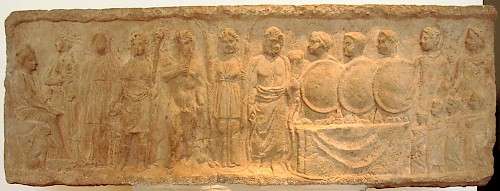
In the Life of Apollonius 5.21, Philostratus describes a visit of the sage and his disciple Damis to the island of Rhodes in the winter of 68/69.
With a favorable wind Apollonius made the passage and held the following conversation in Rhodes. As he approached the statue of the Colossus, [his disciple] Damis asked him, if he thought anything could be greater than that; and he replied, "Yes, a man who loves wisdom in a sound and innocent spirit." (LoA 5.21)
This story cannot be true. The giant statue of the sun god had collapsed in 227/226 BCE, and it is impossible that Apollonius of Tyana has ever seen this wonder of the ancient world.note The explanation of Philostratus' mistake must be that he has confused two Apollonii; when he visited Rhodes, he heard a bon mot of an Apollonius, and unaware of the chronological implausibility, he assumed that the speaker must have been the Tyanean Apollonius. (The man who was really responsible for the saying may have been the poet Apollonius of Rhodes, who was staying on the island when the Colossus collapsed.)
This little story enables us to see how Philostratus used local traditions. He knew several anecdotes about the charismatic miracle worker and neo-Pythagorean philosopher, and retold them without thinking too long about them. Since he is not very critical, we may assume that he rendered the stories faithfully, and this enables us to reconstruct several pre-Philostratean traditions. It is important to know these: when we can ascertain that they are independent and older than the LoA, we are approaching the real Apollonius.
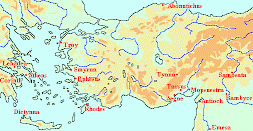
The most interesting case is Ephesus. Several parts of Philostratus' narrative are connected with this town in Asia Minor. (a) There is a tale about Apollonius being able to understand the language of birds (LoA 4.3), a story that is - in a slightly different form - also known from a study On abstinence (3.3.6) by the philosopher Porphyry of Tyre (234-c.303). (b) Next, there is a story about the murder of the Roman emperor Domitian (LoA 8.26). It is worth quoting it in full; note Philostratus' attention for details related to the art of speaking in public.
Although this deed was done in Rome, Apollonius was a spectator of it in Ephesus. For about midday he was delivering an address in the groves of the colonnade, just at the moment when it all happened in the palace at Rome; and first he dropped his voice, as if he were terrified, and then, though with less vigor than was usual with him, he continued his exposition, like one who between his words caught glimpses of something foreign to his subject, and at last he lapsed into silence, like one who has been interrupted in his discourse. And with an awful glance at the ground, and stepping forward three or four paces from his pulpit, he cried: "Smite the tyrant, smite him" - not like one who derives from some looking glass a faint image of the truth, but as one who sees things with his own eyes, and is taking part in a tragedy.
All Ephesus - for all Ephesus was at his lecture - was struck dumb with astonishment; but he, pausing like those who are trying to see and wait until their doubts are ended, said: "Take heart, gentlemen, for the tyrant has been slain this day."
More or less the same account about "that wizard and magician" can be read in the Roman History by Cassius Dio, an older contemporary of Philostratus and one of the best historians from Antiquity.note Some details are different, however, and this makes it plausible that Dio did not find his tale in the LoA. or vice versa. (c) Finally, we learn about Apollonius warning the Ephesians for an approaching epidemic and expelling a plague demon (LoA 4.4 and 4.10). This chapter of the LoA contains two remarks about a statue erected to commemorate the incident; it is also known from another source, the Divine Institutions (5.3.14) by the Christian author Lactantius (second half third/first quarter fourth century). These three anecdotes have two things in common: they portray Apollonius as a visionary, knowing more than ordinary people, and they antedate the composition of the LoA.
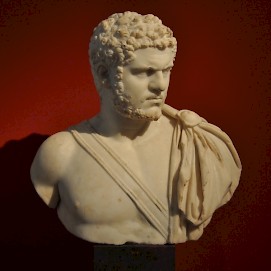
Another town that remembered Apollonius, was Tyana. There used to be a shrine, dedicated to Tyana's famous son, which was rebuilt by the emperor Caracalla.note It is probable that Apollonius was venerated as a healer, because many people traveled to this ancient Lourdes to be cured. The Greek author Lucian of Samosata (c.120-c.190) mentions a doctor from Tyana who called himself a disciple from Apollonius;note this man - who is described as "one of those charlatans who deal in magic and mystic incantations, and will smooth your course of love, confound your enemies, find you treasure, or secure you an inheritance" - must have lived in the first half of the second century. Philostratus can have known Tyanean stories about miraculous cures by Apollonius, but is is difficult to find out which parts of the LoA are derived from this tradition. The only tale that can safely be assumed to come from Tyana, deals with the portents of Apollonius' birth and a miraculous well, sacred to Zeus, the heavenly father of the sage (LoA 1.5-6). Maybe archaeologists will one day discover more about the background of these traditions.note found in Mopsuesta, which proves the existence of a shrine and a statue dedicated to Apollonius. It describes him as a corrector of everything that has gone wrong, sent from heaven. These last words may contain an element of polemic, because everybody knew that Apollonius was born in Tyana.}}
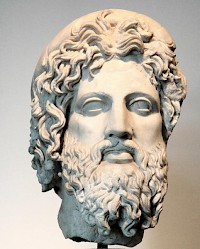
At Aegae, not far from Tyana, Apollonius was also remembered for his miraculous healings. The accounts of Apollonius' youth as a pious temple servant, collaborating with Asclepius, the god of medicine, were collected by an author named Maximus. He also knew of stories about Apollonius' visit to several Platonic, Stoic, Aristotelian, Epicurean and Pythagorean teachers. Maximus' book will be discussed below.
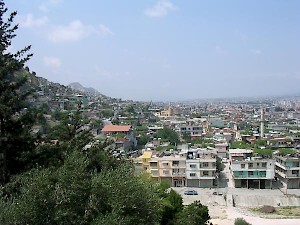
The capital of Syria, Antioch, knew many stories about the magician Apollonius. The sixth century town historian John Malalasnote describes how Apollonius built apotropaic figures, which were (we know from other sources) still visible in his own days. Apollonius' reputation as a magician was well established in Late Antiquity, and when the Arabs captured Antioch in 637, they were impressed by the acts of "Balînâs", who became a legendary figure in the Muslim world, the sâhib at-tilasmât, the master of the amulets. It is likely that Philostratus knew stories about Apollonius the magician -from Antioch or not- but choose to ignore them.
Other towns remembered Apollonius as well. For example, Philostratus informs us that the inhabitants of Tarsus told him about the healing of a young man with rabies (LoA 6.43). He also knows that the inhabitants of Lebadea knew a story about Apollonius' visit to the oracle of Trophonius, where he was initially opposed by the priests (LoA 8.19-20). Moreover, Philostratus tells us that "everybody knows" that Apollonius once overcame a vampire, but that nobody seems to know that this happened in Corinth (LoA 4.25). Finally, Philostratus is aware of several tales of the end of Apollonius' earthly existence, which were told in Ephesus, Lindus (on Rhodes), or the shrine of Dictynna (LoA 8.30).
Although Philostratus writes that Apollonius visited Italy twice, he never claims to have heard oral traditions about Apollonius in Italy, even though it is certain that Philostratus visited this country in the first decade of the third century and had sufficient opportunity to find these stories.
There are several explanations. One of them is that Philostratus started to write the LoA after he had left Italy; another is that he did not speak Latin. The most probable explanation is that Apollonius never visited Italy and that there were, consequently, no local traditions. On the other hand, Philostratus pays a lot of attention to Apollonius' relation to the emperors of the Flavian dynasty (Vespasian, Titus, and Domitian), whose careers and courtiers are not very well known. (If we were to discover the lost parts of the Histories of the Roman historian Tacitus, it would not come as a surprise to meet Apollonius as a court astrologer.)
At the end of this section, we may conclude that the local traditions presented Philostratus (and us) with several images of the Tyanean sage. Because they are known from other sources, we know most about the Ephesian tradition that he was a visionary, and the tradition of Tyana and Aegae that he was a miraculous healer. The latter tradition resembles the stories from Corinth and Tarsus. Little can be said with certainty about the Antiochene tradition that Apollonius was a magician, but it can be corroborated with the statements of Cassius Dio and Lucian.